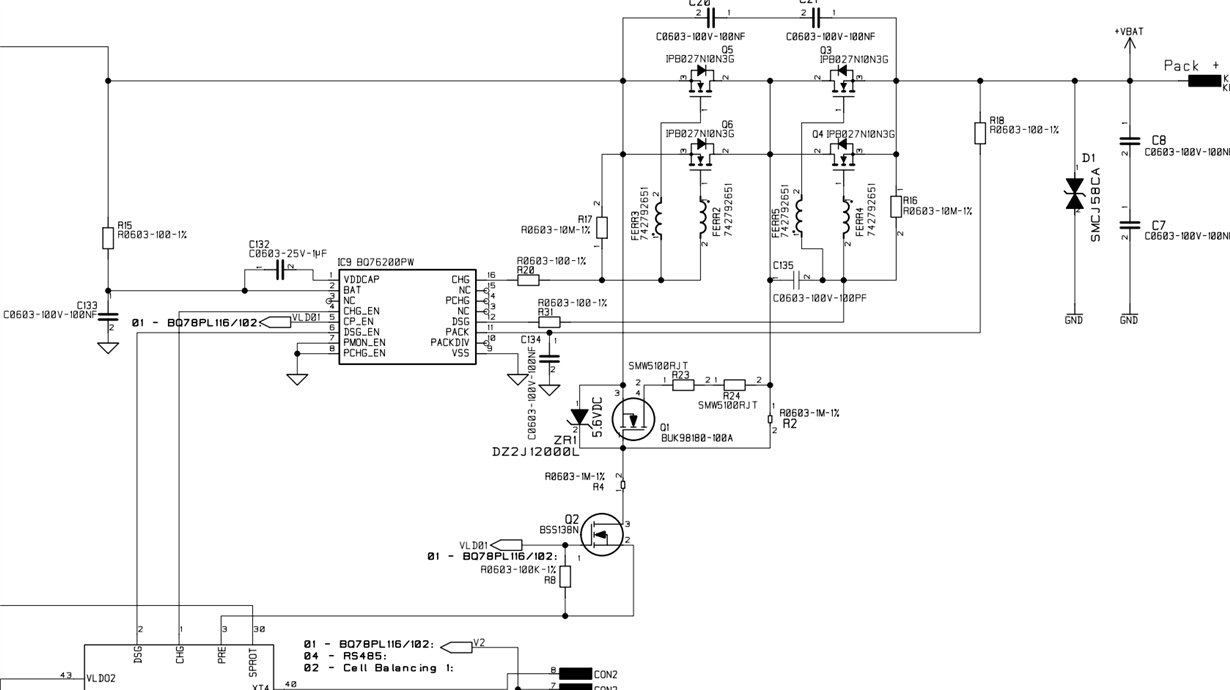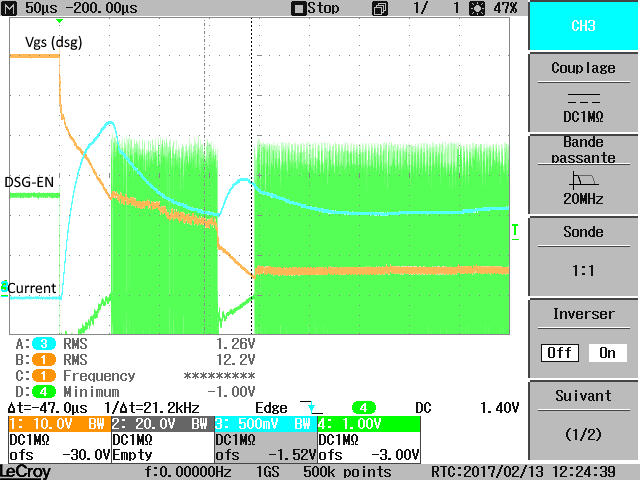Hello,
I have a lifepo4 16S BMS with a BQ76200 driven by a BQ78PL116.
Sometime the BQ76200 fails : on the chg and dsg outputs, I can observe shorts pulses at 80kHz ... It seem that charge pump is not ok.
Charge pump = 9.25V
CHG_EN, CP_EN, DSG_EN = 2.5V
Vbat = 53V
The only way for fix this problem is to change the BQ76200.
My schematic :
Why the IC fails ?
Thanks
Nicolas



